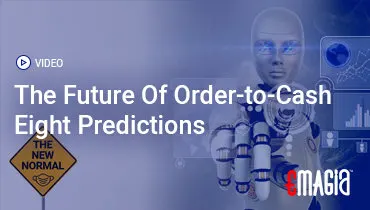Introduction: The Cost of Invalid Deductions
Every year, businesses lose millions due to invalid deductions — unauthorized claimbacks, pricing discrepancies, and promotion-related misunderstandings. Traditional deduction validation is time-consuming and manual, often relying on fragmented ERP data and overburdened analysts.
Enter the AI-based Deductions Validity Predictor — a transformative solution that uses machine learning to score and prioritize deductions based on their validity, automating what once took hours per claim.
What is an AI-based Deductions Validity Predictor?
This smart solution uses historical data, invoice patterns, and claim documentation to assess deduction legitimacy. AI technology identifies deductions that are likely incorrect, enabling finance teams to prioritize resolution quickly and accurately.
Why You Need a Deductions Validity Predictor
- Manual validation is slow and error-prone
- Invalid claims reduce profitability
- AI increases deduction recovery rates significantly
- Automated triage reduces overhead costs
How Does an AI-based Deductions Validity Predictor Work?
- Collects and analyzes information from enterprise systems, email correspondence, and electronic data exchanges.
- Extracts relevant claim features
- Applies machine learning for predictive scoring
- Ranks deductions by recovery potential
- Feeds analyst decisions back to refine the model
Key Features That Drive Results
1. Predictive Scoring Engine
Trained on thousands of claims to deliver up to 95% accuracy.
2. Intelligent Worklist Prioritization
Focuses analyst attention on the most recoverable deductions.
3. Real-Time Document Matching
Instantly aligns claims with backup documentation.
4. ERP Integration
Easily integrates with leading ERP platforms like SAP, Oracle, NetSuite, JD Edwards, and more.
5. Continuous Learning Loop
Every analyst input helps refine the model’s accuracy over time.
Business Benefits You Can Expect
- 30–50% increase in deduction recovery
- 40–60% reduction in resolution time
- Higher analyst productivity
- Lower operational costs
Implementation: What You Need to Know
Start with a pilot, ensure clean ERP data, and provide training to teams. Track KPIs such as DSO, resolution rate, and recovered revenue for measurable ROI.
Challenges and How to Overcome Them
- Data readiness: Ensure complete, accurate deduction records
- User adoption: Build trust with transparent AI logic
- Change management: Provide training and clear success metrics
Future of Deduction Management: Predictable, Autonomous, AI-driven
We’re moving toward zero-touch deduction processing with explainable AI and integration into broader O2C and finance automation platforms.
How Emagia Helps Maximize Value with AI-based Deduction Validity Predictor
Emagia delivers an advanced AI-driven solution designed to optimize deduction processes.
- Gia AI: Predicts deduction legitimacy with contextual analysis
- GiaDocs AI: Streamlines the process of identifying and verifying deduction support documents.
- Integrated platform: A unified system that brings together automation for deductions, credit management, and collections.
- Cloud-ready: Deploys across SAP, Oracle, and NetSuite systems
FAQs
What is an AI-based Deductions Validity Predictor?
A tool that uses machine learning to determine whether a deduction is likely to be valid or invalid.
How accurate are these predictors?
They often achieve 90–95% accuracy by learning from historical data.
Does it work with existing ERP systems?
Yes, most vendors offer API integration with leading ERP solutions.
Is it only for large enterprises?
No, mid-market companies can also benefit through reduced labor and better recovery rates.
How is Emagia’s solution different?
It combines AI deduction scoring with document automation and a full O2C AI ecosystem.



